Are you thinking about converting a small space in your home into an office area? Before you begin, make a good plan for the room. Making the best of small spaces is always important, but especially so when dealing with a home office. If you’re going to spend time in your office regularly, you need to make sure you the space is functional, comfortable and versatile. This can be achieved by optimising the layout of your space, choosing good colours, and using space-saving furniture.
1. Creating the Perfect Layout
Finding the right layout is important when you’re trying to maximise space in your home office. Position your desk and chair in a way that you can manoeuvre about your office and easily access everything.
- Place filing cabinets and shelves in corners to maximise storage space while keeping the centre of the room clear. In fact — do you even need filing cabinets these days? Think about digital storage! Many small companies these days use DropBox and iCloud and try to be as paperless as possible.
- Use walls to add storage space, lighting, or art to brighten up your work zone.
- Decide what you will and won’t need in your office and only fill the space with important items.
- Put your desk near a window to let natural light in on your workspace.
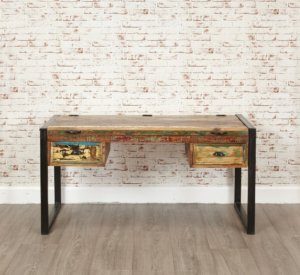 Having a home office needn’t mean giving up on style or sustainability, by the way. This up-cycled desk (w 150 x d 65.5) is made using reclaimed wood salvaged from old buildings in India and is hand finished, meaning every piece is individual. It also has two drawers and a lift up lid to hide your laptop.
Having a home office needn’t mean giving up on style or sustainability, by the way. This up-cycled desk (w 150 x d 65.5) is made using reclaimed wood salvaged from old buildings in India and is hand finished, meaning every piece is individual. It also has two drawers and a lift up lid to hide your laptop.
2. Using Colours to Open Your Room
A room’s colour has a significant effect on the look and feel of the room. There are some colours, white included, that can really help open a room visually and make it feel more comfortable. Using soft, muted colours to accent white walls can also help to provide a soothing feeling. In addition to making the room feel larger, white walls work well as a backdrop for both modern and antique furniture and decor.
Even though they’re effective, white walls can be a bit boring though. You could spice things up by using a soft, muted colour for your walls and painting the trim with a warm or cool white to create an elegant look without making the room feel smaller.
If you opt for natural wood accents or furniture, make sure you choose a lighter, softer colour for the best results. Match hardwood flooring with natural wood furniture to create a consistent look against white walls.
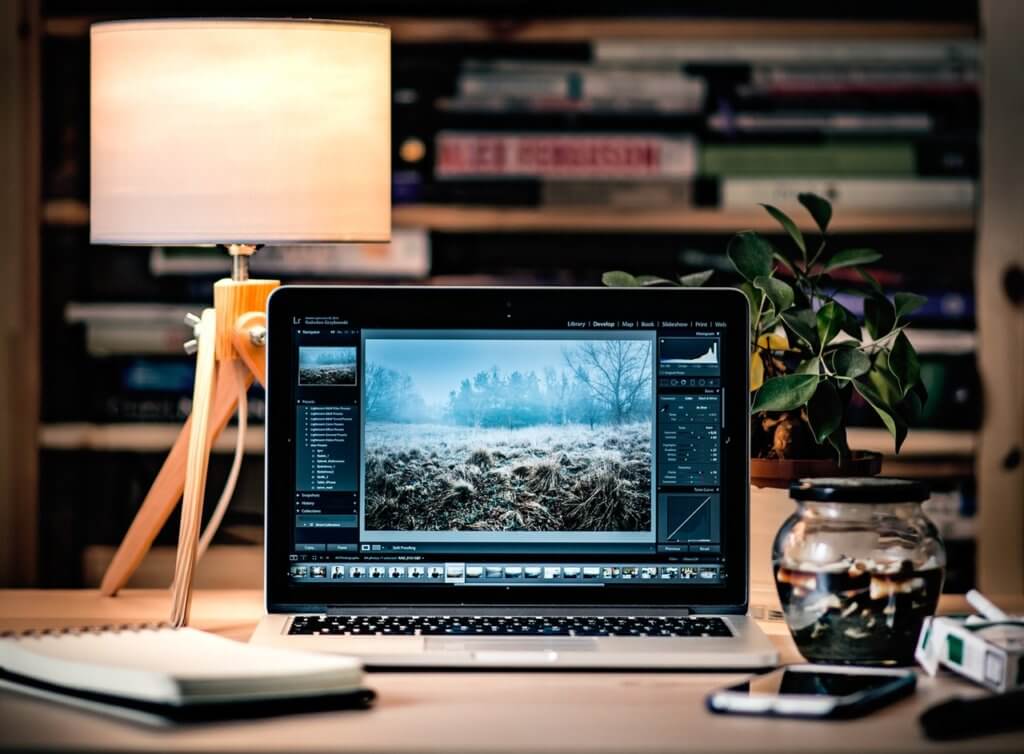 3. Modernising and Minimising
3. Modernising and Minimising
While many people prefer antique furniture, home offices are one instance in which modernising can be extremely helpful. Some modern office furniture is designed to hold computer monitors, cords, peripherals and more to give you a more organised and streamlined office set up.
However, if you’d rather stick with antique furniture, look into modern office accessories. Desktop organisers and monitor mounts are a great way to keep things tidy and save space, plus they make wonderful accent pieces.
4. Saving Space with Furniture
A small-space home office is nothing without the proper furniture. Choosing the right desk, chair, shelving and accessories saves space and brightens up your office.
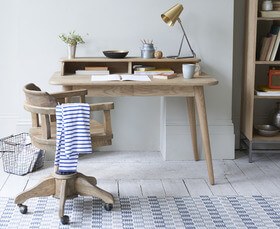 Desks: You’re going to need a desk for your office, and it’s going to take up a good bit of space. Opt for desks with built-in storage options such as drawers, shelves and cabinets to make your desk a versatile piece. We especially love this desk from Loaf as it combines functionality with clean, stylish looks. Alternatively, mount a floating desk to the wall to optimise your desk’s height and save floor space for other furniture.
Desks: You’re going to need a desk for your office, and it’s going to take up a good bit of space. Opt for desks with built-in storage options such as drawers, shelves and cabinets to make your desk a versatile piece. We especially love this desk from Loaf as it combines functionality with clean, stylish looks. Alternatively, mount a floating desk to the wall to optimise your desk’s height and save floor space for other furniture.
If you fancy something a little more modern-looking, this Graphik desk caught our eye too from Maisons du Monde. It’s small enough for a tight space (w 120cm) and bright enough to stop work feeling like a chore. It’s got a bunch of storage spaces on top and a laptop drawer.
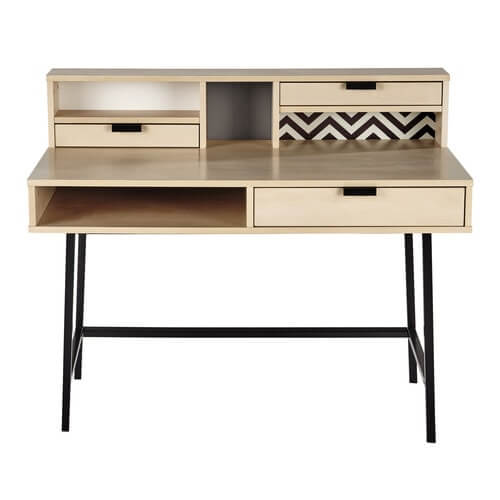
- Chairs: Choose a chair that either partially or fully slides under your desk to save space when it’s not in use. Avoid chairs that are heavy and don’t have wheels, as you want something easy to move. For a simple yet sophisticated look in a compact package, try these ones (£59.99) which have castors and come in a bunch of colours:
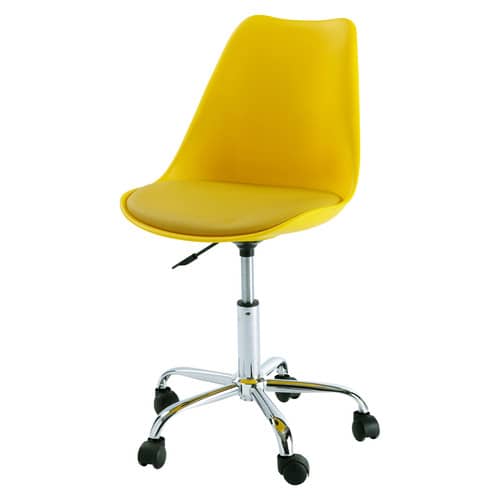 Shelving: Use wall-mounted shelves to add storage space to walls that would otherwise be blank . For corner placement and heaver items, get a tiered shelving unit or two. We love Loaf’s Skinny Lad shelf; it’s a functional piece with a smooth gunmetal finish that provides a great accent.
Shelving: Use wall-mounted shelves to add storage space to walls that would otherwise be blank . For corner placement and heaver items, get a tiered shelving unit or two. We love Loaf’s Skinny Lad shelf; it’s a functional piece with a smooth gunmetal finish that provides a great accent.
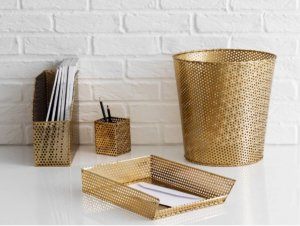 Accessories: Your office is only as organised as your desk. Try this Macula file tray and pen pot from Habitat to keep things tidy and give yourself a larger workspace. Use the colour of desk accessories to complement art, furniture or trim colours; this creates a cohesive look without flooding your office with a particular colour. Using striking colours like gold adds a touch of glamour to an otherwise boring activity (filing!)
Accessories: Your office is only as organised as your desk. Try this Macula file tray and pen pot from Habitat to keep things tidy and give yourself a larger workspace. Use the colour of desk accessories to complement art, furniture or trim colours; this creates a cohesive look without flooding your office with a particular colour. Using striking colours like gold adds a touch of glamour to an otherwise boring activity (filing!)
Finding the optimal office setup can difficult — especially in small spaces. Just remember, your office should serve your workflow, not the other way around. Decide what you’ll be using your office for and what you’ll regularly need access to and design accordingly. Choose a layout that works for you, make use of wall-mounted and other space-saving furniture, and remember to use colours that make your office feel bigger. And don’t wear pyjamas for Skype calls!



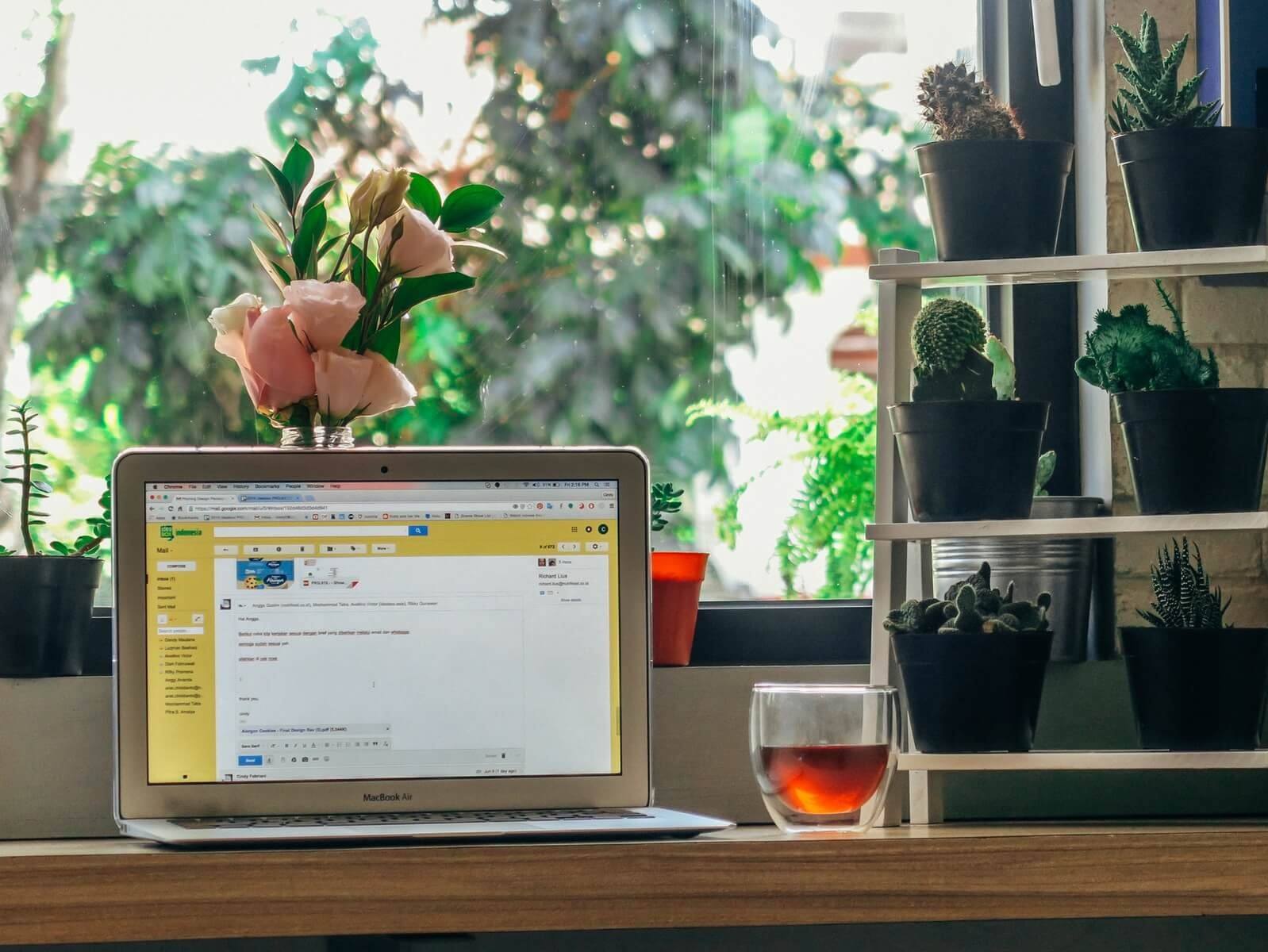






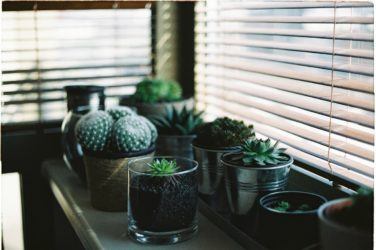

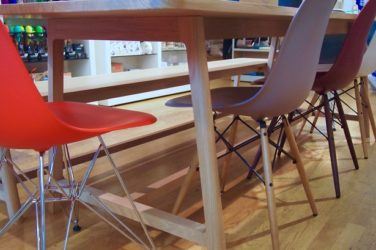
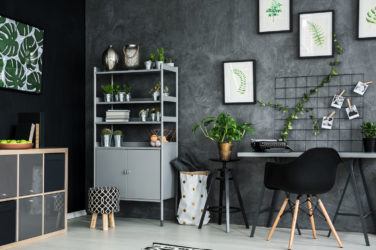
Show Comments